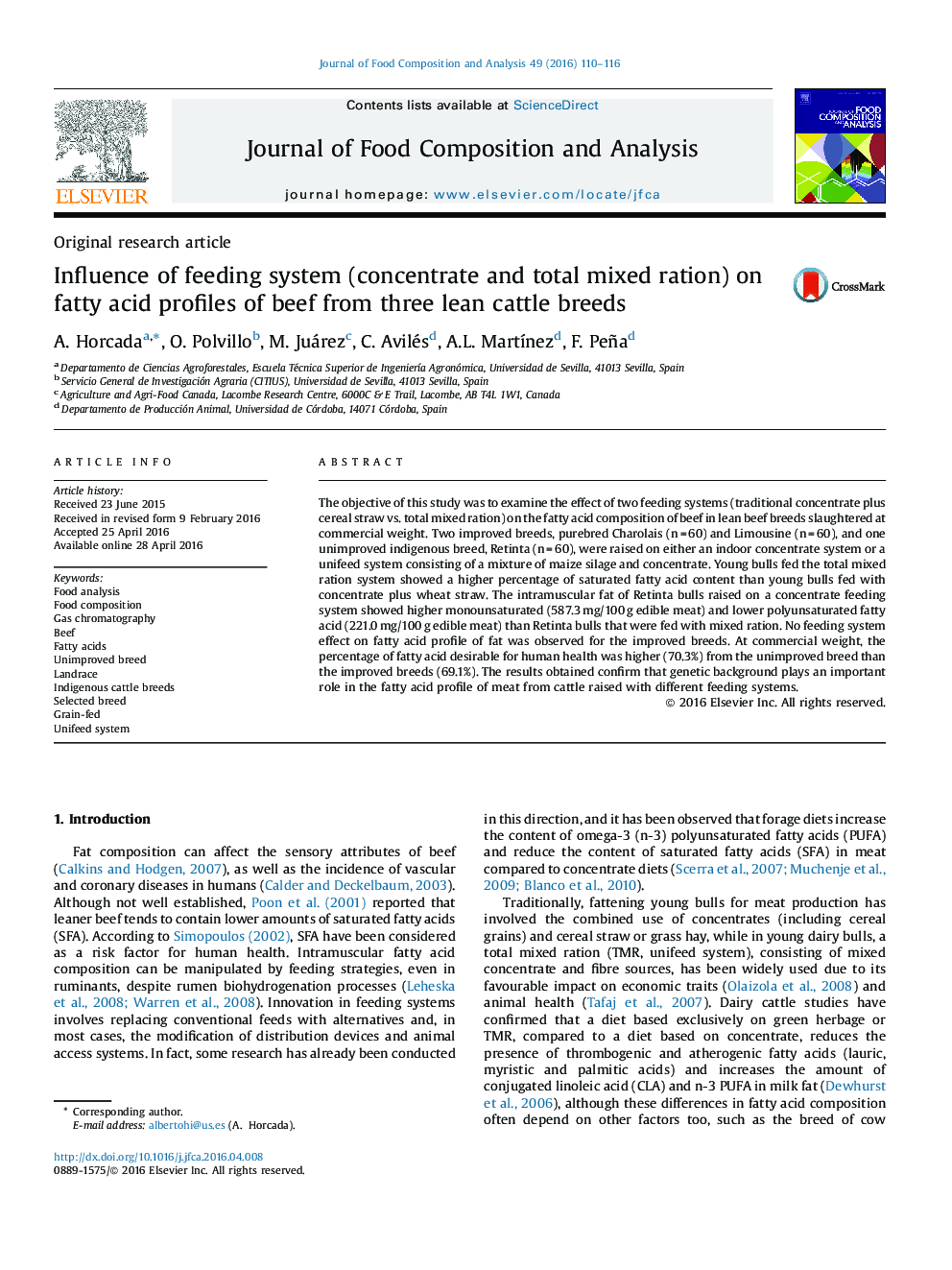| Article ID | Journal | Published Year | Pages | File Type |
|---|---|---|---|---|
| 1218065 | Journal of Food Composition and Analysis | 2016 | 7 Pages |
•Lean beef fed mixed rations show highest content of saturated fatty acids.•Effect of feed on unsaturated fatty acids in purebred lean young bulls was minimal.•Best ratios of desirable fatty acid for human health correspond to unimproved breed.•Genetic background influences FA profile of beef fed with different feeding systems.
The objective of this study was to examine the effect of two feeding systems (traditional concentrate plus cereal straw vs. total mixed ration) on the fatty acid composition of beef in lean beef breeds slaughtered at commercial weight. Two improved breeds, purebred Charolais (n = 60) and Limousine (n = 60), and one unimproved indigenous breed, Retinta (n = 60), were raised on either an indoor concentrate system or a unifeed system consisting of a mixture of maize silage and concentrate. Young bulls fed the total mixed ration system showed a higher percentage of saturated fatty acid content than young bulls fed with concentrate plus wheat straw. The intramuscular fat of Retinta bulls raised on a concentrate feeding system showed higher monounsaturated (587.3 mg/100 g edible meat) and lower polyunsaturated fatty acid (221.0 mg/100 g edible meat) than Retinta bulls that were fed with mixed ration. No feeding system effect on fatty acid profile of fat was observed for the improved breeds. At commercial weight, the percentage of fatty acid desirable for human health was higher (70.3%) from the unimproved breed than the improved breeds (69.1%). The results obtained confirm that genetic background plays an important role in the fatty acid profile of meat from cattle raised with different feeding systems.
